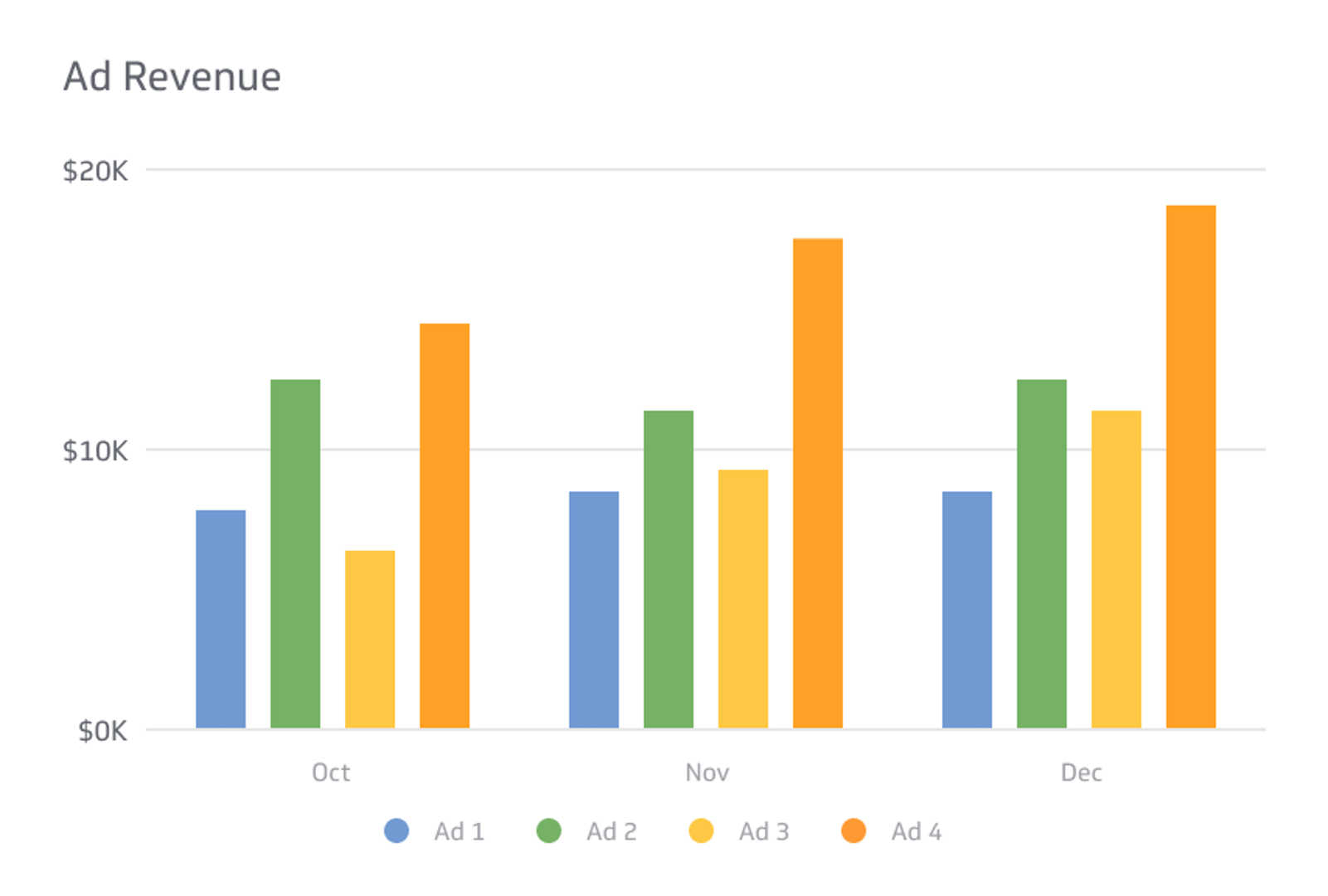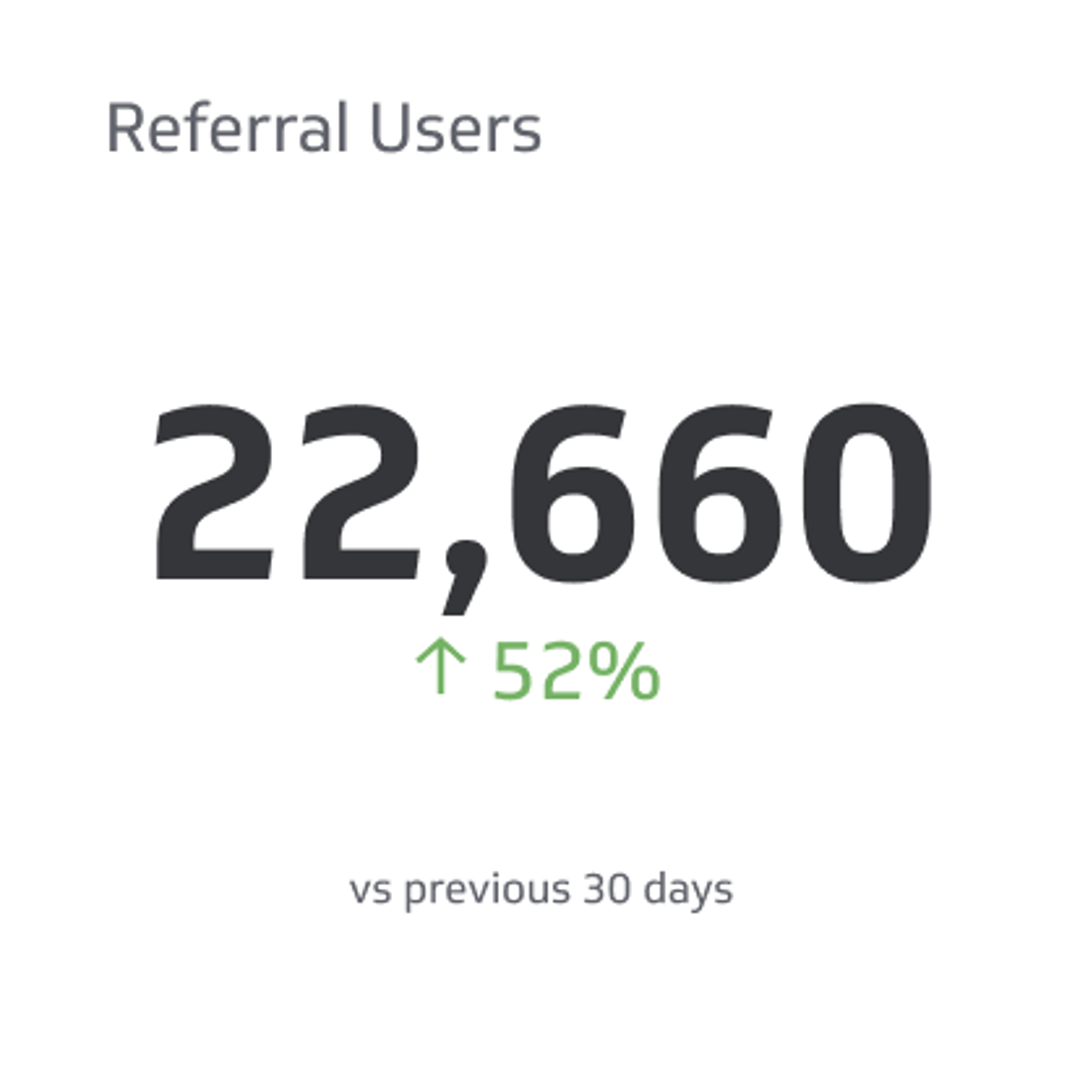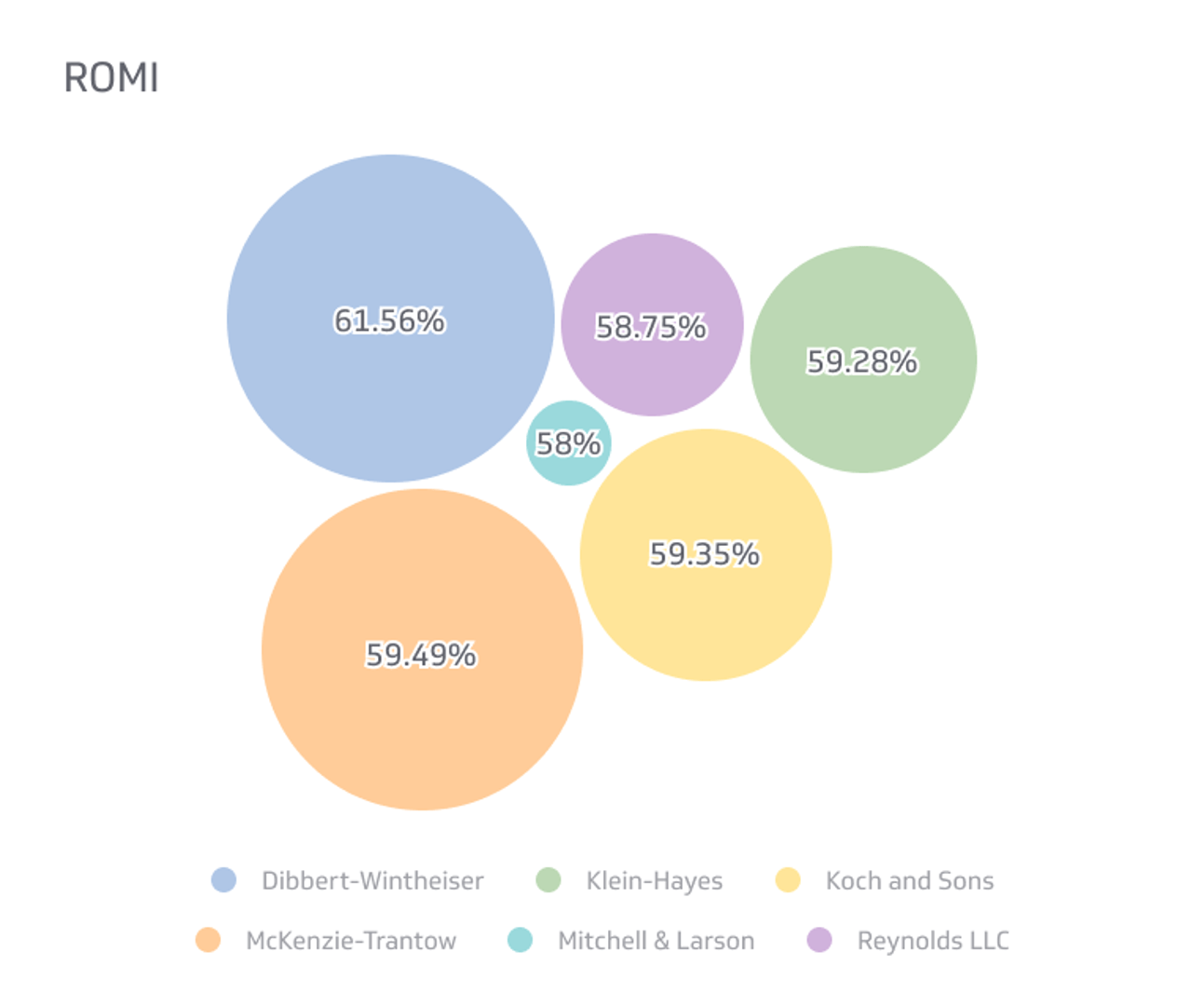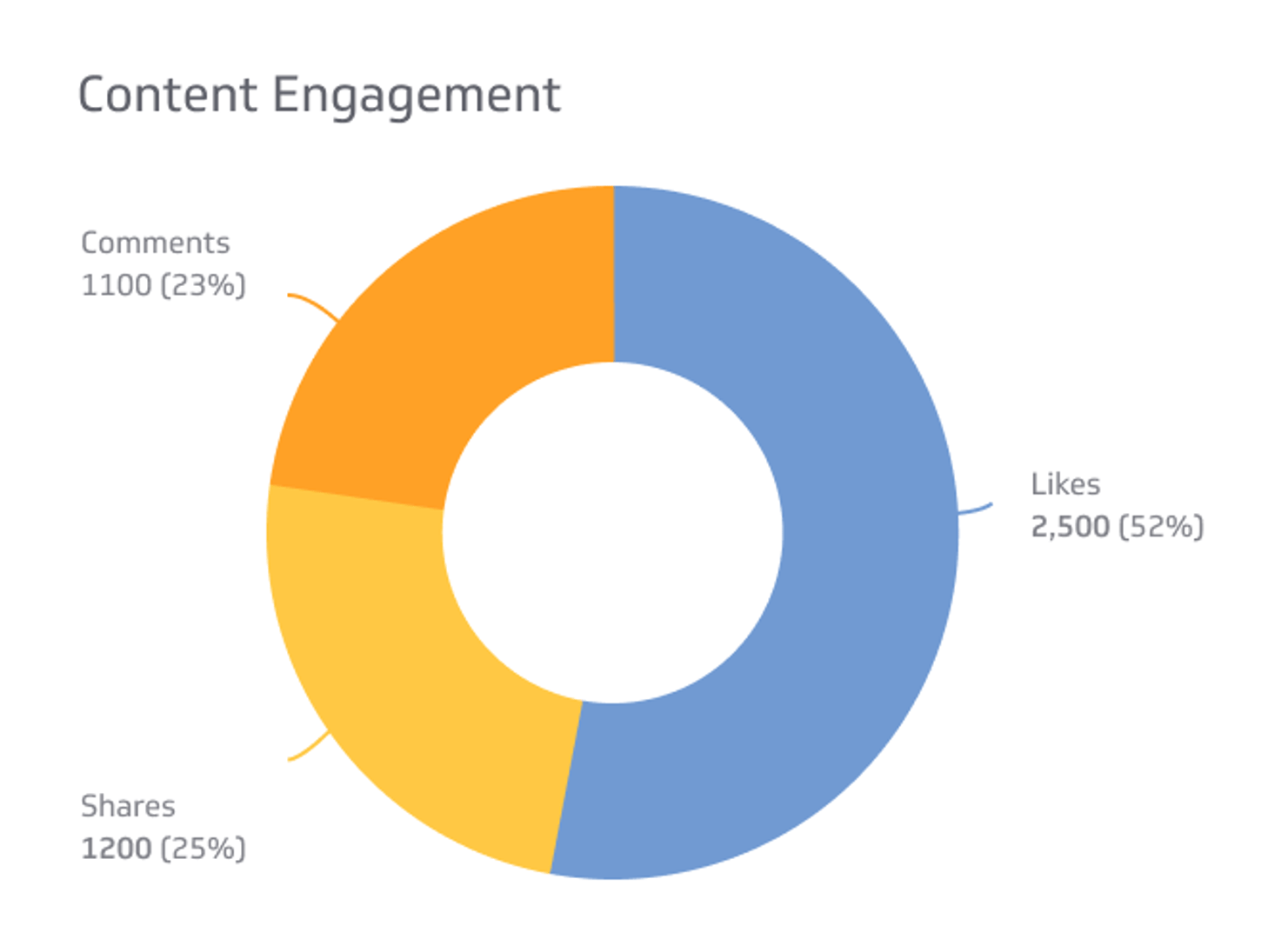Ad Revenue
Ad revenue is income you earn specifically from placing advertisements for products or services on behalf of others.
Track all your Digital Marketing KPIs in one place
Sign up for free and start making decisions for your business with confidence.

What is ad revenue, specifically, and how do we apply it to business practices?
Although it may sound intuitive upon first hearing, the truth is that ad revenue is more complicated than it looks. Here’s what you should know about it.
What Is Ad Revenue?
Ad revenue is income you earn specifically from placing advertisements for products or services on behalf of others. Most ads are online these days, but ad revenue also covers things like television and magazine advertisements.
In this context, advertisements refer mainly to promotional materials placed in traditional advertising channels, not including your website or links through things like blog posts.
While these are technically a form of marketing, we don’t consider these ads to calculate ad revenue.
Who Collects Ad Revenue?
Typically, companies that host websites containing the ad collect the ad revenue. They may split the ads with an ad provider.
For example, if Generic Soap Company advertises its soap on a blog using Google Ads, both Google and the site host will collect a portion of the fee.
How Do the Ads Work?
The mechanics of ad placement depend on the system you’re using to place the ads. Google’s ad system is easily the most popular but not your only option.
For a typical website, ad placement services offer a range of coding options that can integrate ads onto the site. These are usually banners, sidebars, or in-content boxes that the website host can move around and adjust as needed.
Site hosts usually have little direct control over the ads that appear on the site. Instead, ad placement services try to show ads that they estimate any particular user is most likely to be interested in.
Algorithmic ad placement provides a more personalized, and therefore more profitable, experience.
How Much Ad Revenue Can a Site Collect?
That depends on many factors, including the quality of the ads, the number of people clicking on them, the ad service, and any unique details.
Google AdSense pays between 51% and 68%, depending on whether it’s a search or content ad.
Generally, larger websites will see more ad clicks and, therefore, more revenue. However, a smaller, tightly-knit community may have more clicks than a large but disinterested group, so site size alone is not an effective way to evaluate potential income.
What Are the Benefits of Collecting Ad Revenue?
Here are some of the main benefits you can get from trying to collect ad revenue on a site.
User-Friendly Process
Ad revenue makes up a significant amount of commercial transactions on the internet, and it’s relatively easy to sign up and start putting ads on any website you own. Ad services focus on making this as easy as possible so more websites will use them.
Ads can work with a range of website designs, too. For example, let’s say you have a website that heavily uses your top and sidebars.
You don’t want to place ads there because they would mess up the navigation for your site and frustrate users.
Instead, you can place ads directly into your site’s content, avoiding areas where they’d be problematic for you.
Ad services are flexible about things like this because they know that no ad placement setup works in every situation, and it’s better for them if they let website owners decide where and how often to place ads.
Simple Growth
Ad revenue offers a relatively straightforward path for growth. As long as you have ads, if you focus on getting more traffic and viewers, ad revenue increases naturally.
Quality matters when you’re trying to run a site. Whether you have a hobby website promoting kites, a news site, or a personal travel blog, content is still king. A high-quality, well-promoted site will naturally do better than lower-quality content.
Collecting ad revenue encourages website owners to do things that will attract and retain visitors, including producing higher-quality content. The result is sustainable, organic website growth.
Practical for Smaller Sites
Ad revenue can be practical for even relatively small websites.
A minimal amount of fixed advertisements for an affiliate payment system may drive enough income to pay for hosting costs, allowing a small website to continue existing with the resources it needs without having to focus on growth.
The thing to remember here is that not every website is a growth-oriented business. Sometimes people create websites as (or for) hobbies or to help create a community, and they don’t want to spend all their time monetizing it.
Getting just enough ad revenue to keep the website going can work out well for them.
Flexibility with Payment Models
Ad revenue can also make it easier to provide different payment models or membership tiers.
A common setup for businesses is having a free version of the site with advertisements alongside a paid version that removes the ads.
Removing the ads gives users an option and allows the site to profit from a much larger user base than a paid-only model may support.
Don’t underestimate the value of free content.
Aside from being profitable, thanks to ads, free content gives people a low-investment way to experience your content and see if they want more. If they do, most of them are happy to start paying.
Meanwhile, many users will never become regular paying customers regardless of the quality of your content.
Some people refuse to pay for certain things, others don’t have the money, and some choose not to. You can’t convince them otherwise.
Ad revenue makes it possible to profit from people who are otherwise out of your reach. In that sense, it’s easily one of the most effective models for protecting a site.
Diversified Income Streams
A great website usually allows for multiple income sources. For example, you might have placed advertisements and sponsored posts written by other people.
Multiple streams of income can significantly increase your profits and let you make the most from an audience.
Here, it’s important to remember to have a good balance.
You can accept nothing but sponsored posts, sure, but viewers will likely drift off if they think you’re nothing but a vehicle for ads (whether that’s true, and it sometimes is, doesn’t matter to them).
However, an occasional sponsored post can let you earn money instead of spending it to create content, padding your income without genuinely upsetting your visitors.
What Are the Disadvantages of Seeking Ad Revenue?
Ad revenue makes sense for many sites, but that doesn’t mean it’s entirely free of drawbacks. Consider the following before you start putting ads for someone else on your site.
Unreliable Income
Ad revenue can fluctuate significantly based on factors outside your control. While you can usually expect a minimum based on your number of visitors, the different pay from month to month can make it hard to plan too far ahead or invest a lot of your site income without more risk.
The only practical way of countering unreliable income is to have multiple income streams for your site so that if one fails for a while, the others can help pick up the slack until you stabilize your viewer base again.
Terms of Placement
Many advertisers have specific terms they want sites to follow when placing ads. Depending on your site, this can make it much harder to find ads that work for your needs.
The problem here is that ads are not created equal. You can set any price an ad buyer is willing to pay if you host them independently, but if you’re using something like Google AdSense, they charge far more for certain terms.
In a way, this works out for websites because Google wants to maximize their income, and the more they make, the more ad partners make.
However, that doesn’t necessarily mean Google will be putting high-value ads on your site, especially if it’s not sure whether your site meets the buyer’s expectations.
Trying to meet as many ad buyer guidelines as possible can lead to a generic website that avoids many relevant topics for fear of losing advertisements.
Ultimately, you have to decide whether you’re willing to accept the terms of ad placement.
Site Reputation
On occasion, advertisements can damage your site's reputation. Damage to your reputation is common when you have ads that significantly conflict with the style or focus of your site.
As an example, a friendly hangout site may see tensions rise if there are a bunch of political ads during election season. Similarly, a site that’s intended to be family-friendly should not use ads for adult-oriented comics.
There’s no end to the possible impacts on your site reputation from content you’re not proactively choosing to host.
Ad services usually try to avoid showing anything that conflicts too much with your site design, but there’s always something that slips through the cracks.
Increasing Ad Revenue
Here are some things you can do to improve a website’s ad revenue.
Improve User Experience
Improving user experience can attract more people to the site and encourage them to remain for longer. The result is a direct increase in your profit per user from advertisements.
Have a Consistent Schedule
Generally, the more new content you upload to your site, the more viewers you can potentially attract. Many websites should try to upload a minimum of once per week, and once per day is even better.
Try to avoid posting more content than your viewers can keep up with, though. It’s one thing for news organizations to focus on the latest stories, but a typical website doesn’t need to upload quite that fast.
Test Ad Placements
You can use A/B testing to evaluate the effectiveness of ads and figure out which placements work best on your site. You can even try out different types of ads, from banners and videos to sticker ads or in-content links.
If you set ad placements one time and never investigate or change them, you’re probably leaving money on the table.
Make Better Content
Original, high-quality content tends to attract people more than recycled material.
If you’re only posting things people can find on dozens of other websites, then you don’t have a value proposition drawing them to you.
Final Thoughts
Ad revenue is responsible for a significant part of the way the modern internet operates. While it’s practical for most websites and easy to implement at almost any scale, it does have a few drawbacks that you should keep in mind.
Ultimately, it’s always best to consider collecting ad revenue on a case-by-case basis.
Related Metrics & KPIs


.png)
